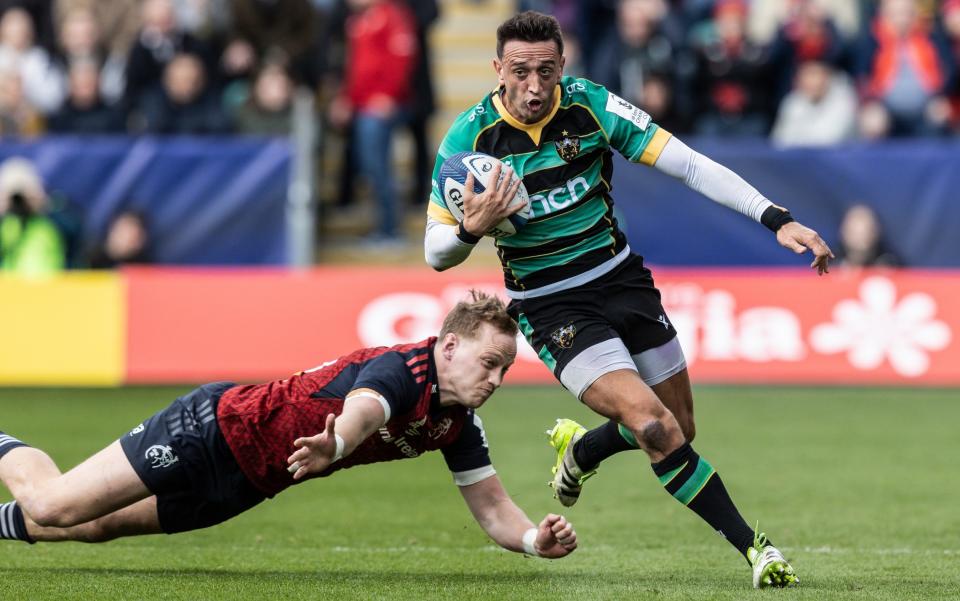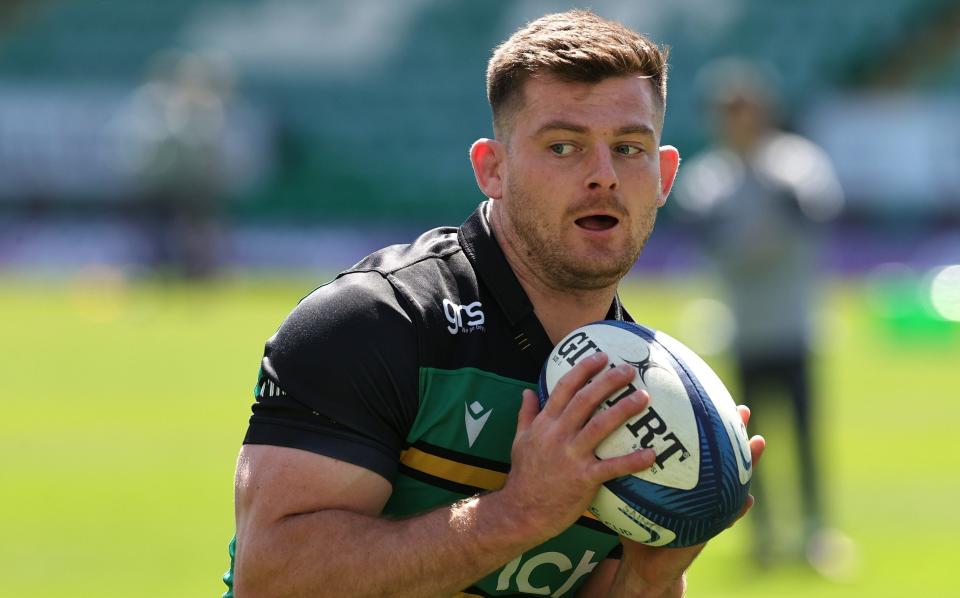Northampton Saints need a trophy to justify their business model

Nothing better illustrates the gulf in resources between Northampton Saints and Leinster, who meet in an Investec Champions Cup semi-final on Saturday evening, than in their recent recruitment.
If Leinster are shopping in Harrods for All Black Jordie Barrett and Springbok RG Snyman then Northampton are raiding the equivalent of Home Bargains, announcing three signings on Wednesday who hail from San Diego Legion, Doncaster Knights and Luctonians respectively. Even as leaders of the Gallagher Premiership, Northampton are firmly in the bottom half of the league’s spenders and will be waving goodbye to two of their highest profile players in Courtney Lawes and Lewis Ludlam this summer having already lost fly-half Dan Biggar last season.
Welcome, lads 👋
We are pleased to announce the signings of @archiebensonn, @fynbrown6 and Luke Green ahead of the 2024/25 season.https://t.co/1wSgKJalba pic.twitter.com/7NVXILzgNp— Northampton Saints 😇 (@SaintsRugby) May 1, 2024
It would be understandable if Northampton chief executive Mark Darbon was jealous of what he will calls the “disparity in spend” that makes Leinster heavy favourites at Croke Park. Instead he believes that European rugby as a whole will benefit from the arrival of the world-class centre. Even if Northampton cannot afford to shop in the more salubrious establishments, Darbon takes just as much pride in the nurturing of a rough diamond such as back-rower Sam Graham who was once a chef serving England players food at Pennyhill Park.
“I think having world-class players in Europe is a great thing for our game,” Darbon told Telegraph Sport. “My view is the biggest challenge that rugby faces is an audience challenge. Unless we grow our audience, especially with younger people, we are going to have a real issue with our sport in the future and I think people want to watch fantastic players playing great rugby. I think he’s a great addition to the European leagues and if we draw Leinster next season our lads would be over the moon to face him.
“We are not the highest spenders in the league but we have found a way to make our model work. As exciting as it is to see Jordie Barrett, we are really excited to see guys like Sam Graham and Tom James, who have ploughed their trade in the Championship, and have made the step up fantastically first to the Premiership and then to Europe. That’s really motivating for us given the model that we are deploying.”

That model amounts to being the best-run club in the Premiership. With no sugar daddy behind them, Northampton sit atop the Premiership with the league’s highest proportion of homegrown players all committed to a captivating brand of rugby that has also resulted in the club having the highest representation in England’s Six Nations squad. No wonder the full house signs are going up at Franklin’s Gardens.
When Darbon was appointed as chief executive in 2017, Northampton were in a period of stagnation following their Premiership title three years earlier with a squad that was old, bloated and highly paid. Darbon acted decisively to replace Jim Mallinder as director of rugby with New Zealander Chris Boyd with a brief to prioritise three things: young, English and high potential. Phil Dowson has taken over that mantra from Boyd and is on the cusp of delivering a play-off qualification for the fourth time, but Darbon is conscious that silverware is needed to vindicate his vision.
“I think if you look at us from a rugby perspective, we’ve gone over that period from an older, experienced international led squad playing a particular way to the youngest team in the league with comfortably the highest proportion of homegrown players playing a brand of rugby that people seem to be really excited about,” Darbon said. “The frustration is that we haven’t won anything yet. We’ve got to demonstrate that we can win something under that model. But at the same time, you know, we’ve gone from being one of the highest spenders in the league to not being at that level.”
Commercially, the club were the last to post a profit in the Premiership before the Covid-19 pandemic struck and they have just posted a record turnover. Arriving at the club having worked on the London 2012 project and for events company Tougher Mudder, Darbon, who is likely to be on the Rugby Football Union’s shortlist to replace chief executive Bill Sweeney when he steps down, has considerably helped the club broaden its horizons. “Someone said to me before I started, ‘The problem with Northampton Saints is that they want to be the biggest club in Northampton’,” Darbon said. “And I didn’t really know what they meant. And then I got here and it sort of felt a bit insular. I think if nothing else, we’ve become much more open and progressive, both in terms of the way we think about our commercial model, but how we interact with other stakeholders.”
Nevertheless, Northampton still posted a loss of £467,836 in the last set of financial results which does not bode well for the rest of the league if the best-run club are in the red. “You don’t have to be a rocket scientist, at the moment the cost-base is outstripping the income that the clubs are generating,” Darbon said. “As a result, their clubs are loss making. I think the average loss in the year that we posted a small profit was £5 million across the Premiership clubs. So if we were turning a small profit and the average loss was £5 million there are some healthy losses.”
The Professional Game Partnership is a step in the right direction but Darbon warned that it will not be “transformational”. He also notes with disappointment that the renewed broadcast deal with TNT Sports is “not as high as we would have liked”. Everything, in Darbon’s view, comes back to growing the broader rugby audience, but at the same time he views the increase in the Premiership salary cap from £5 million to £6.4 million next season with alarm.
“I’m a big believer that we should be compensating our players appropriately,” Darbon said. “They’re the heart and soul of what we do in a full-on, combative sport, and I think they should be well remunerated for that. But as clubs and as our sport, we can’t allow the model to become too stressed and allow that cost base to grow without the right controls.
“The salary cap is just that, it’s a cap not a target. Our ambition is to build the most competitive squad where we can and win stuff, but we’re under no illusions that we’ve got to do that within our means.”

